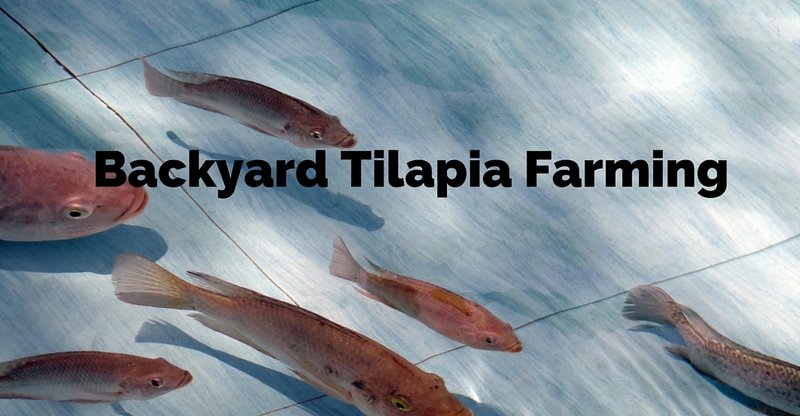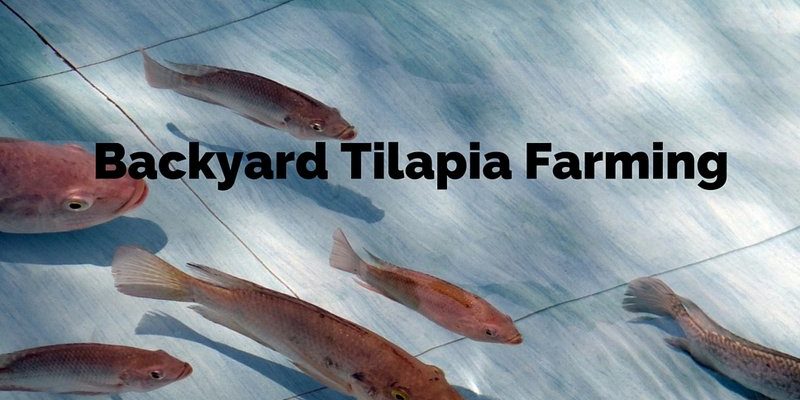
Now, you might be wondering what it takes to get started. Tilapia are hardy fish that can adapt well to various environments. They’re relatively easy to raise and can grow quickly, making them a popular choice for backyard aquaculture. In this guide, I’ll walk you through everything you need to know about setting up your pond, maintaining it, and ensuring your tilapia flourish.
Choosing the Right Pond Location
The first step in raising tilapia is selecting the right spot for your pond. You want a place that gets plenty of sunlight—at least six hours a day is ideal. Sunlight helps manage water temperature, which is crucial for tilapia growth. Think of it like a warm hug!
You should also consider accessibility. You’ll need to reach it easily for feeding, monitoring, and maintenance. Look for a relatively flat area to build your pond, avoiding places where water tends to pool or drain poorly, because you don’t want your fish turning into swimming blobs of mud!
Lastly, check for nearby plants or trees. While shade is great on particularly hot days, too much can lower the water temperature and hinder fish growth. A balance between sunlight and shade is essential. If you can, find a spot that allows for some wind protection to keep the pond from getting too hot.
Designing Your Pond
Now that you’ve found the perfect spot, it’s time to think about your pond’s design. The size of your pond will depend on how many tilapia you plan to raise. A good rule of thumb is to have about 1,000 gallons of water for every 100 fish. This ensures they have enough space to grow and thrive.
When designing your pond, keep in mind the depth. Tilapia prefer water temperatures between 75°F and 85°F (24°C to 29°C). A depth of at least three feet helps maintain a stable and warm environment. It also reduces the chance of the pond completely freezing in winter, which is crucial if you live in colder climates.
As you design your pond, consider adding features like a small filter or aeration system. These will help keep your water clean and oxygen-rich. Think of it as creating a cozy, healthy environment where your fish can swim happily.
Stocking Your Pond with Tilapia
Once the pond is all set up, it’s time to stock it with tilapia! You can usually find tilapia fingerlings at local fish farms or online retailers. It’s best to choose a hybrid variety, like *Tilapia nilotica* or *Tilapia aurea*, as these tend to grow faster and can adapt well to different conditions.
When introducing your fingerlings, make sure to acclimate them to the pond’s water gradually. This means floating the bag they come in on the water’s surface for about 15-20 minutes before releasing them. This allows the fish to adjust to any differences in temperature and water chemistry, reducing stress.
Start by stocking around 1-2 fish per square foot of pond area. This density helps ensure that the fish have enough space to grow without overcrowding, which can lead to stress and disease. Keep an eye on their growth; you may need to thin them out later on to maintain a healthy population.
Feeding and Care for Your Tilapia
Feeding your tilapia is crucial for their growth and health. They’re omnivores, which means they’ll eat a variety of foods. You can purchase commercially formulated fish food specifically for tilapia, or you can supplement their diet with kitchen scraps like vegetables and leftover grains. Just think of yourself as a fish chef!
Aim to feed them twice a day, offering enough food that they consume within 10-15 minutes. If the food sits uneaten for too long, it can pollute the water. Regular feedings help keep your fish healthy and plump.
It’s also important to check the water quality regularly. Test for pH, ammonia, nitrite, and nitrate levels. Ideally, the pH should be between 6.5 and 8.5. If you notice any fluctuations, take steps to correct them, as tilapia are sensitive to poor water conditions.
Monitoring Water Conditions
Keeping an eye on the water quality is one of the most critical aspects of raising tilapia. Just like a garden needs good soil, your pond needs clean, balanced water. Monitor the water temperature, pH levels, and clarity regularly.
If you notice the water becoming murky or foul-smelling, it could indicate a problem. Algae blooms can occur if there’s an excess of nutrients, so consider adding aquatic plants that compete for nutrients without harming your fish.
Regular water changes can also help maintain good quality. Aim for a change of about 20% of your pond’s water every two weeks. This sounds like a chore, but it’s essential for your fish’s health. Also, keep an eye out for any signs of disease, such as unusual swimming patterns or discoloration, and act quickly if you spot something.
Harvesting Your Tilapia
After months of care, it’s time for the best part—harvesting your tilapia! Depending on the conditions, tilapia can reach market size (about 1-2 pounds) in 6-8 months. When they’re ready, you can either harvest for a meal or sell them.
To catch them, consider using a net or a trap. Be gentle, so you don’t stress them out. Once harvested, it’s best to process them quickly to ensure freshness. If you plan to store them, make sure to properly ice or freeze them to maintain quality.
One thing to note is that tilapia can reproduce quickly. If you’re not careful, you could end up with more fish than your pond can handle. Keeping your population in check is essential, so consider harvesting regularly if you want to prevent overcrowding.
Creating a Sustainable System
Raising tilapia can be a wonderful way to create a sustainable food source for your family. By integrating your pond with a garden, you could adopt aquaponics, where tilapia waste can nourish your plants, and in turn, plants can help filter and clean your pond water. It’s like a beautiful ecosystem, working together!
Consider planting water-friendly vegetables or herbs around the pond. This not only beautifies your yard but also provides additional food sources for you and your fish. Think of it as having your fish and eating your veggies too!
You might also want to explore ways to save on feed costs by utilizing composting or creating worm beds. This adds a fun twist to your backyard project and promotes biodiversity.
In conclusion, raising tilapia in your backyard pond is a journey filled with learning and connection to nature. It’s rewarding to watch your tilapia grow, knowing you’ve created an environment for them to thrive. So, roll up your sleeves and enjoy the process—you’ll soon find that the fruits of your labor are well worth it!

